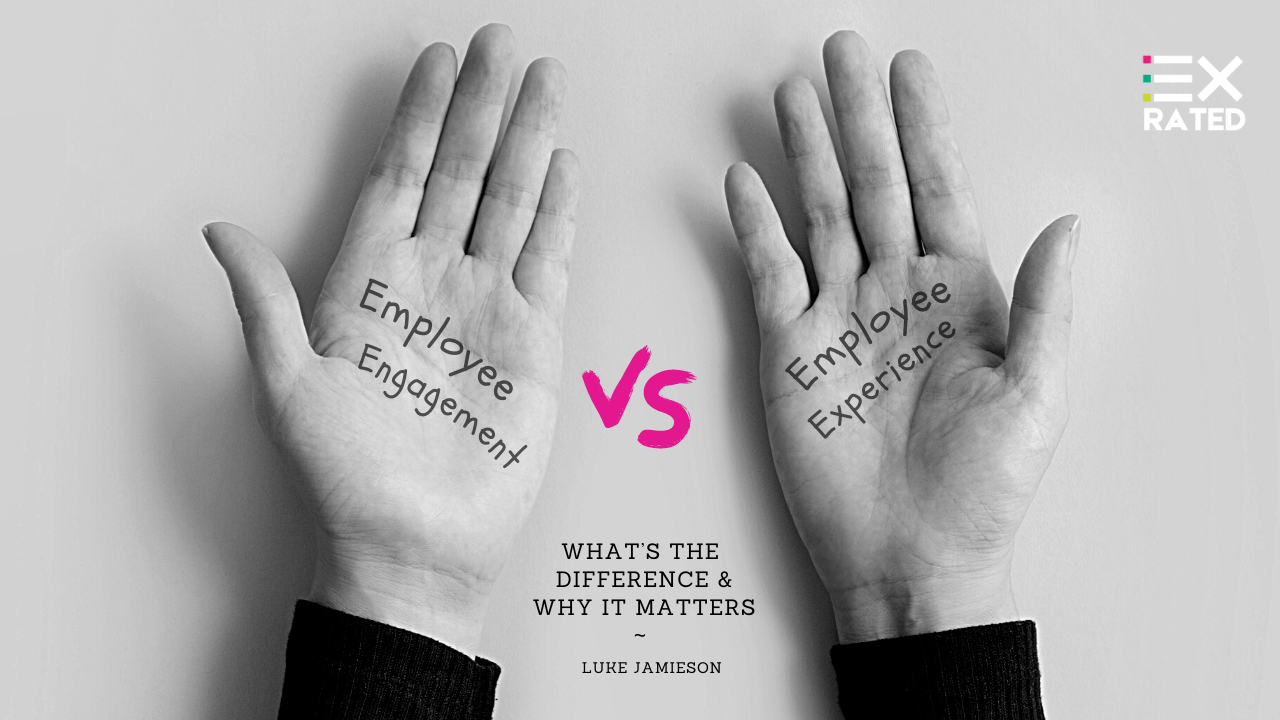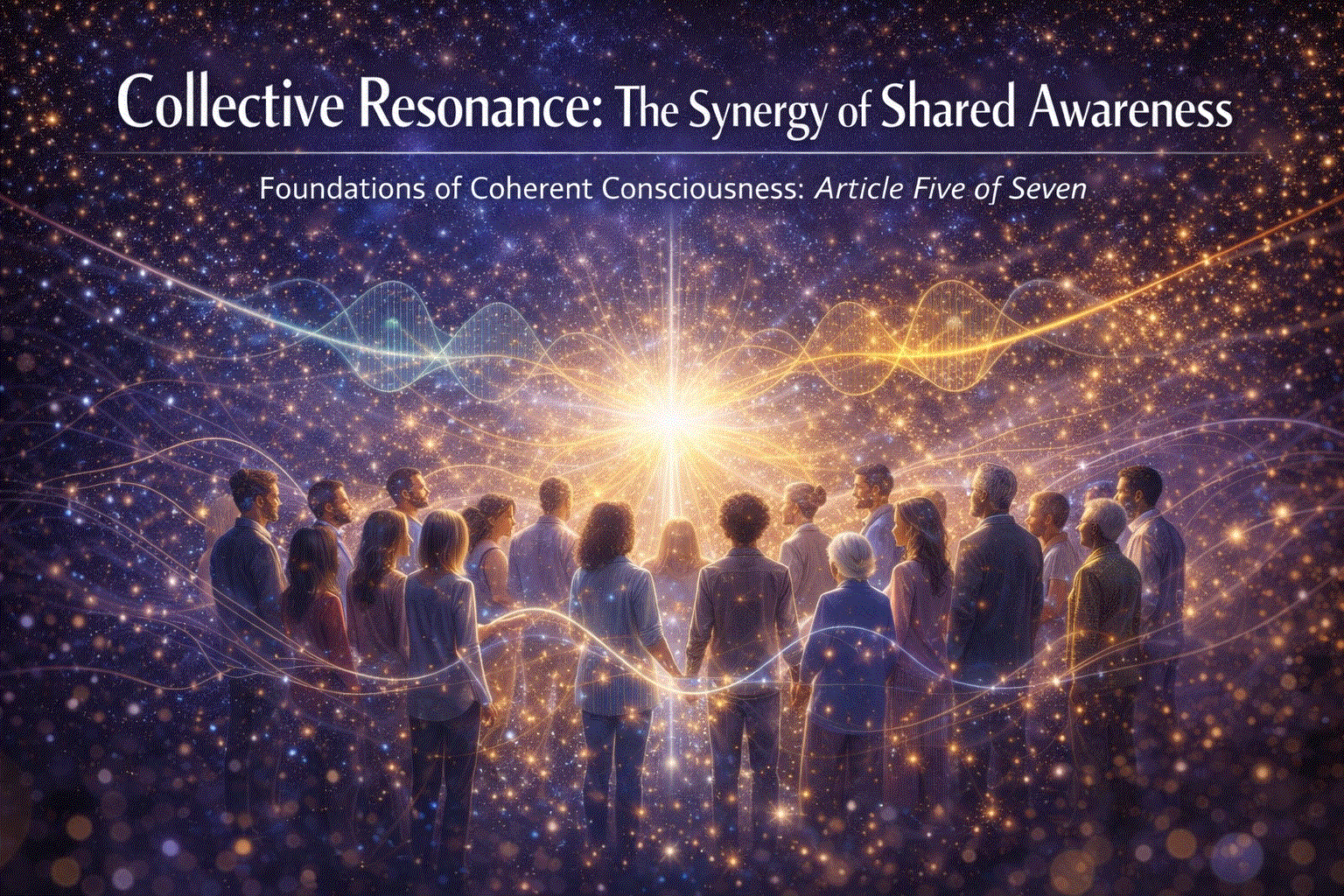Apr04

Employee engagement, workplace culture, employee experience… these are popular captions that show up frequently in conversations about the current and future state of work. Especially given how the pandemic has radically shifted our work world, they’re important topics to talk about.
We hear these words a lot (I mean, I write about them all the time!), but what do they really mean? What’s the difference between them? And why the heck does it even matter?
I’m going to breakdown the differences between employee engagement and employee experience. While connected, these concepts are different. If you are a leader or manager who cares about results, growth, or retention—you need to pay attention. And if you are an employee, you also need to understand these concepts to know what to look out for in a workplace.
We’re going to look at the two concepts in further detail, but I’ll start with the simple definition: Employee experience happens to you; Engagement is within you. Experience is the journey and engagement is the destination.
Employee experience (EX): the journey. It captures all the things an employer can do to create a workplace that attracts and retains talents. It’s a broad category that includes all the touch points between employee and employer. Here are some areas that impact EX:
The employee experience can be broken down into smaller areas, like those listed. However, the primary reason to look at them individually is to see where leadership should invest time, energy, and resources to improve. To do this, leaders may want to:
Like any project, the best way to approach it is to break in down into smaller focus areas. This report by McKinsey organises EX into three broad categories: Social Experience (people, teamwork, socialisation), Work Experience (organisation, control, flexibility, growth), and Organization experience (purpose, technology, environment). By breaking it down like this, companies can take a systematic approach to improving EX.
While it’s helpful to look at different areas, the overall employee experience is most important. A company that is very good at, say, onboarding, but lacks in other areas, is unlikely to retain good employees. Thus, leadership should be concerned with overall employee experience and how it’s impacting each person they employ.
If EX is about what the employer does, then employee engagement is about how an employee feels. Do they like their job? Are they productive, focused, and energized with work? What about relationships between colleagues—strong or room for improvement?
Some characteristics of an engaged employee include:
An engaged employee, quite simply, likes their job. They’re engaged in the work and engaged in the workplace. It’s somewhere they want to be and has a sense of belonging and the best part… Engaged employees find meaning in the work they do and they connect it to their own sense of purpose.
Employee engagement is, of course, desirable for all workers. But beyond the personal benefits, employee engagement is highly valuable for company success and performance. Engaged employees tend to perform better, stay longer in a company, and be more creative and driven in their work.
A good employee experience is a step toward employee engagement. Bad experiences drive employees away cutting short the time it takes for them to connect to the purpose of the work. A string of good employee experiences shared by all employees is the core ingredient to a good culture — So things like branding, values, processes, policies, norms and strategies from leadership matter— Done with purpose and coordination will help foster employee engagement. And employee engagement is the end goal.
Studies show that employee engagement has massive benefits for companies. High employee engagement is connected to:
These reasons are the “business case” for why employee engagement is important. But there’s also a “personal case”: we all deserve to work somewhere we are engaged in our work (regardless of the work) and valued for our contributions.
Employees are waking up to this fact. Given the rise of remote work during the pandemic, employees are realising that they have options. They are no longer location-dependent and can seek out workplaces that give them the employee experience they’re looking for. This is one of the driving factors of the Great Resignation and a reason leaders need to wake up and pay attention to employee engagement.
To sum it all up: Employee experience is made up of actions and environmental factors, controlled by the employer. A good overall EX will Set the stage to produce employee engagement, which is when staff enjoy their work and feel valued at the workplace. This all matters because strong employee engagement is better for people and better for businesses and customers. In a time of great uncertainty, the need for strong employee engagement remains constant and important.
Keywords: Customer Experience, Diversity and Inclusion, Future of Work
 The Wireless Renaissance: From Tesla’s Dream to Agentic Autonomy
The Wireless Renaissance: From Tesla’s Dream to Agentic Autonomy Collective Resonance: How Consciousness Scales Beyond the Individual
Collective Resonance: How Consciousness Scales Beyond the Individual Autonomous Wingmen: Scaling Sustainable Aviation via NVIDIA NAT and Formation Flight
Autonomous Wingmen: Scaling Sustainable Aviation via NVIDIA NAT and Formation Flight The Board Chair as the Primary Lever of Psychological Safety
The Board Chair as the Primary Lever of Psychological Safety Friday’s Change Reflection Quote - Leadership of Change - Change Leaders Maintain Trust and Legitimacy
Friday’s Change Reflection Quote - Leadership of Change - Change Leaders Maintain Trust and Legitimacy